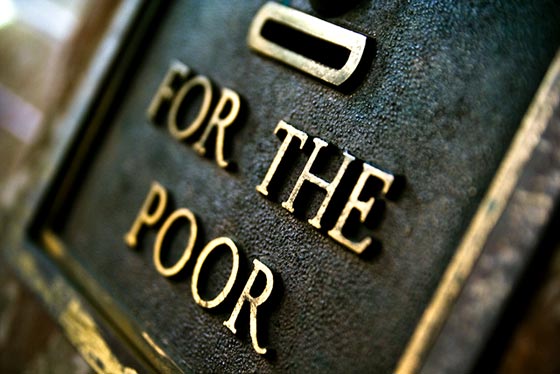The World Giving Index 2011
Charity does not only consist of giving money to the poor but also volunteering time for an organisation or helping a stranger. According to sociologists giving time or money voluntarily to help others is seen as a marker of cohesiveness in a society. When we look at these three different types of charitable behaviour – giving money, giving time and helping a stranger – then we obtain the “World Giving Index”.
In 2011’s edition of the Index the USA and Ireland topped the ranking as the most generous. Thailand was found to be the country with the largest percentage of the population (85%) giving money, the people of Turkmenistan remain as the most generous with their time with 61% having given time to charity and Liberia repeats on the top of the list for helping a stranger (81%).
But quite often we tend to associate charity with wealth. For this reason we introduce this graph. What is funny is that although rich countries are on the top of the ranking there are also middle income and poor countries which demonstrate that generosity is not just a matter of wealth. Thailand, which ranks 93rd in GDP (PPP) per capita in 2010 tops as the most generous country in the world. 85% of thai people (more than United Kingdom, with 79% of its population doing that) give money to charity. Following this trend, Morocco ranks 7th (118th by GDP per capita), Laos P.R.D. 13th (152nd by GDP per capita) and Sri Lanka 21th (119th by GDP per capita).
Main findings
Despite the crisis people are giving more. The proportion of the global community engaged in giving behaviours has increased between 2010 and 2011. In 2010, the global average of the three giving behaviours (giving money, volunteering time and helping a stranger) was 31.6%. By 2011 this had risen to 32.4%.
Enormous variation among countries. The incidence of giving money to charity ranges from as low as 4% in Georgia to as high as 85% in Thailand. Incidence of volunteering lies in a range from 4% in Serbia and Croatia to 61% in Turkmenistan. Each country has its own unique footprint and its own way to give. In Liberia, less than one tenth (11%) of the population give money to charity every month. Yet over three-quarters (81%) of Liberians help a stranger every month, more than any other country in the world.
Changing patterns as we get older. Globally, the older we are, the more we tend to give (although this trend is reversed in some specific emerging and developing countries). However, in most regions, we are least likely to help a stranger when over 50.
Volunteering by region and age. Global patterns in volunteering vary greatly by region and by country. For example, volunteering soars in North America through the lifestages; 48% of North Americans aged 25-34 had volunteered in the previous month, and just 8% of people from the same age did that in Taiwan and Puerto Rico.
Generosity by gender. In terms of gender, women are marginally more likely to give money than men (30% versus 29%). Men, however, are marginally more likely to volunteer (22% vs 19%), and to help a stranger (48% vs 46%).
Happy? Then you are likely to be more generous
The study also found that being happy is more of an influence on giving money to charity than being wealthy. Then giving is more an emotional act than a rational one.
This is a nonprofit explanation






